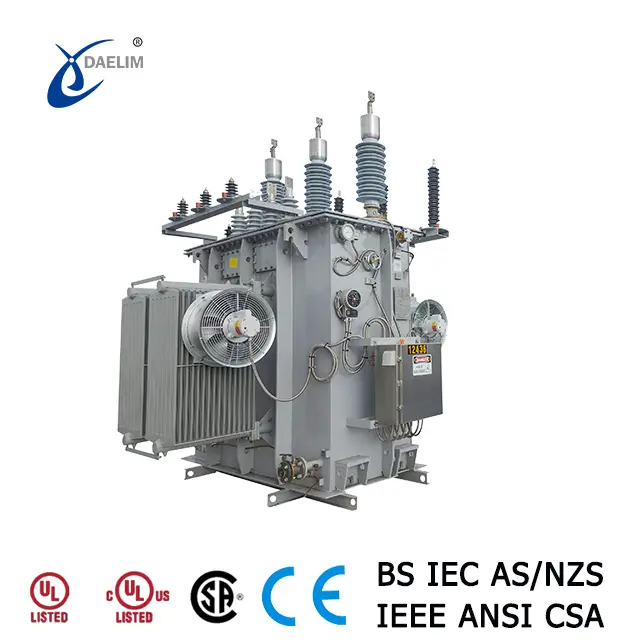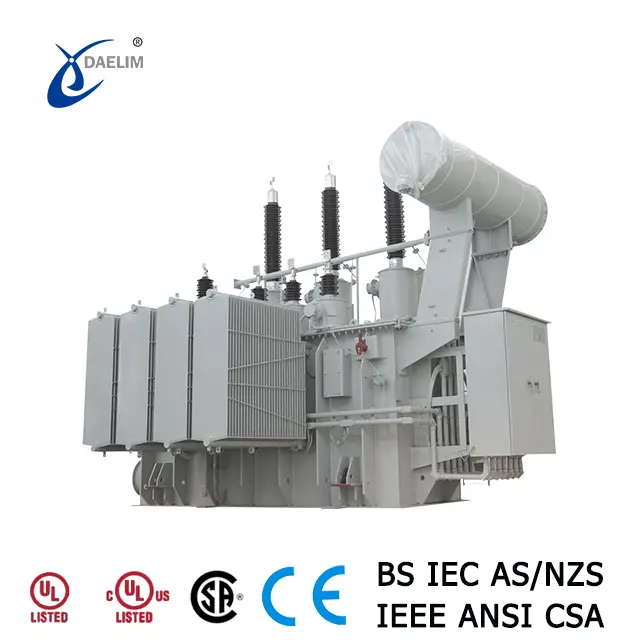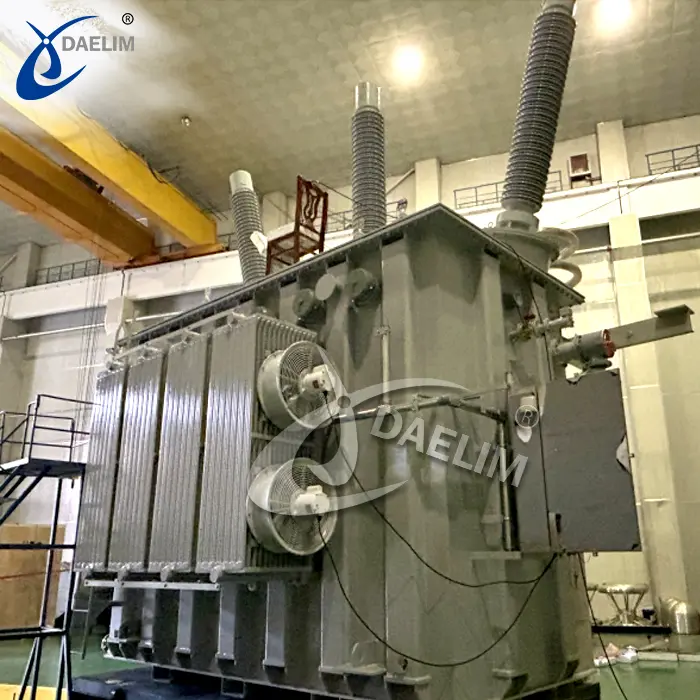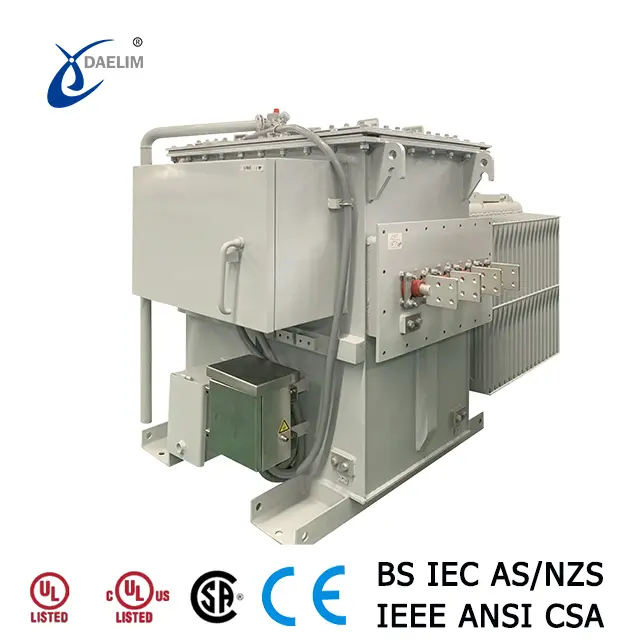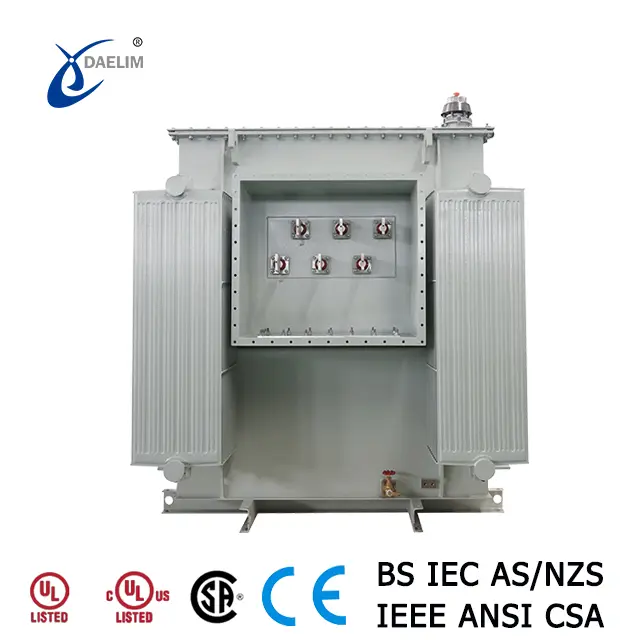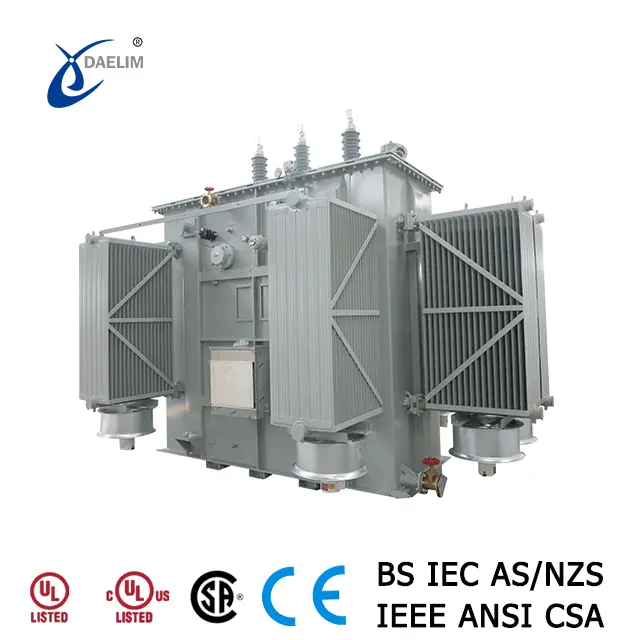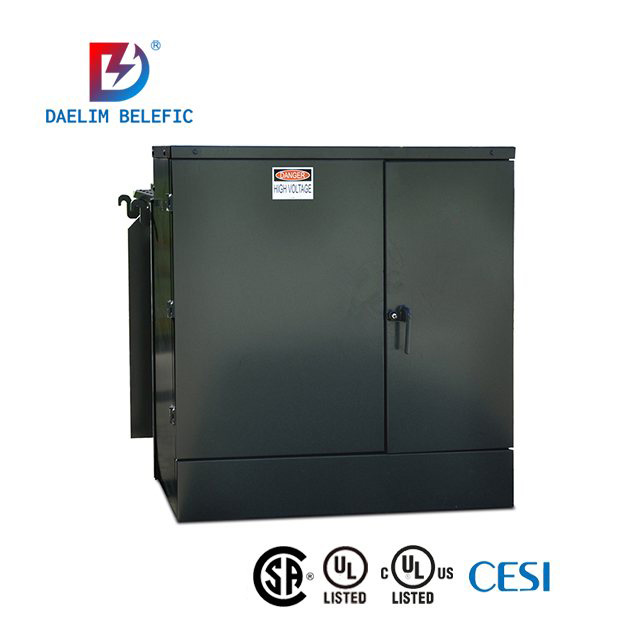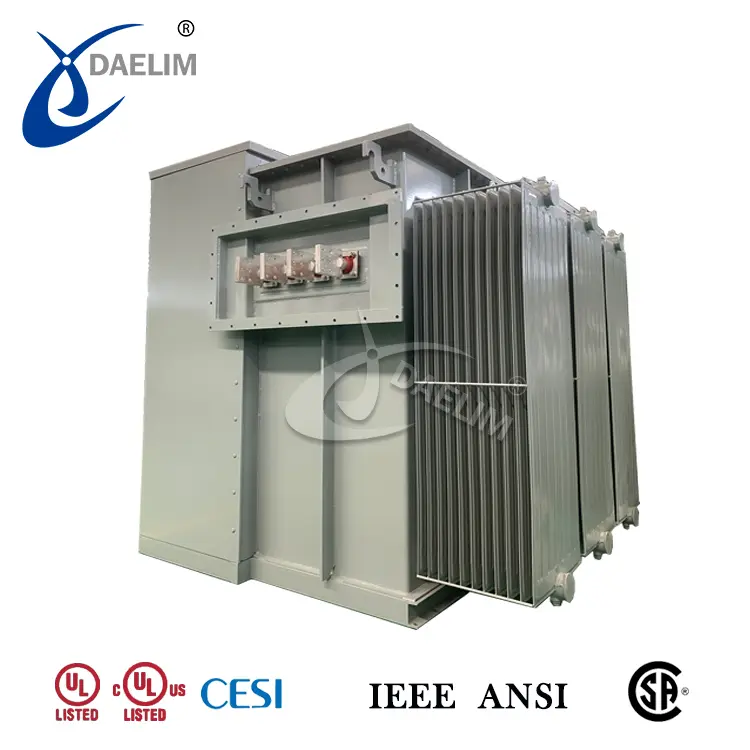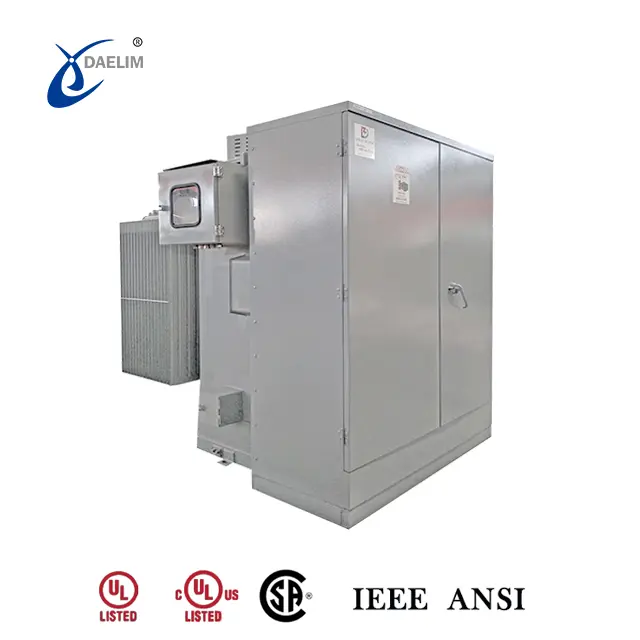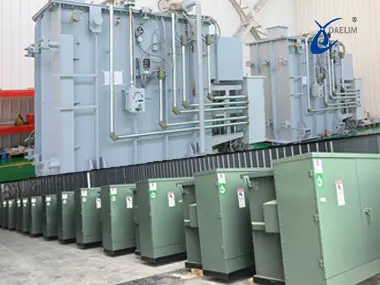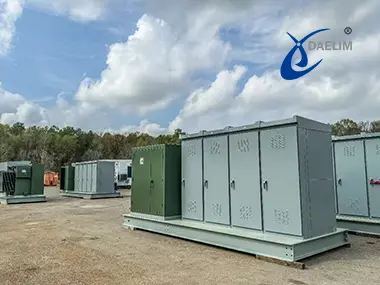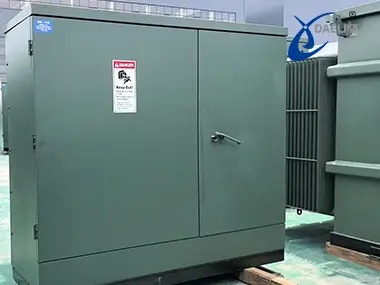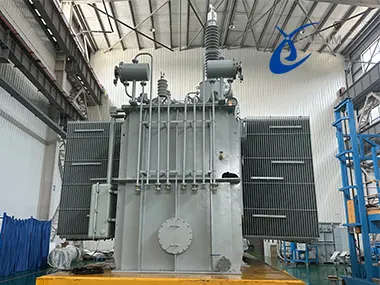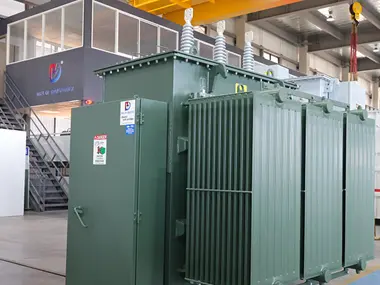Difference Between Surge Protector and Lightning Arrester in Transformers
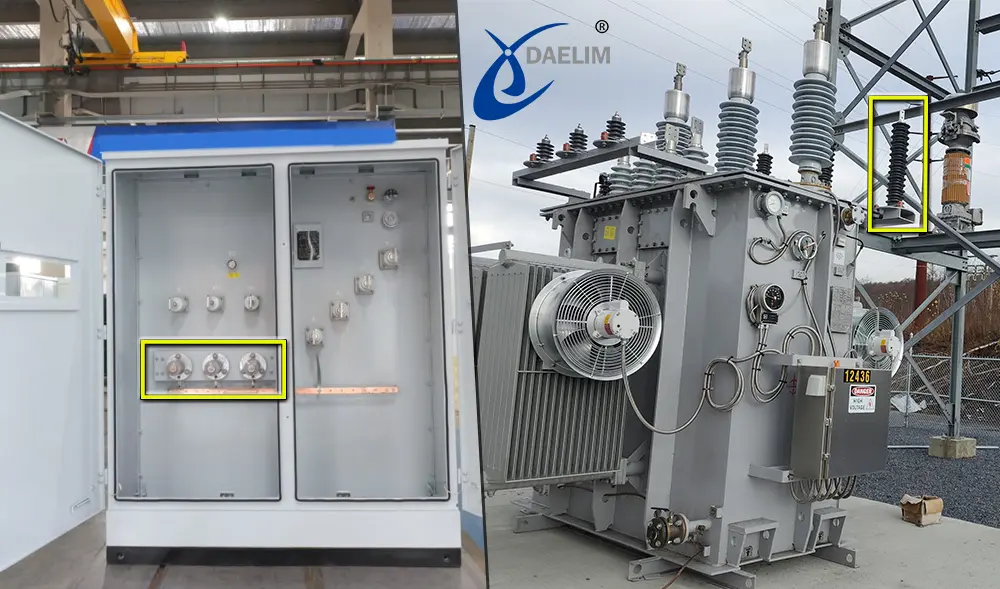
Transformers are indeed the most important components in power systems. But they are also quite vulnerable to voltage surges and transient overvoltage. These spikes, whether internally generated as a result of switching or externally caused by lightning strikes, damage transformer insulation, windings, and other connected equipment severely. This is where protective devices like surge protectors and lightning arresters come into play.
Surge protectors and lightning surge arrestors are often confused as one device or used interchangeably, but they serve very different purposes.
Contact Daelim TransformerWhat is a Surge Protector?
A surge protector is a device installed to protect electrical equipment, like a transformer, from unexpected voltage spikes. These spikes, also known as transient overvoltages, arise from internal switching events, utility grid fluctuation, or even indirect lightning strikes. These surges or transients may cause problems with the connected devices. When surge protectors detect excess voltage, they safely divert that current harmlessly to the ground.
What is a Lightning Arrester?
A lightning arrester is a device used to protect electrical installations from very high voltages, mostly due to direct lightning strike or caused by a nearby lightning strike. Lightning arresters places at high sites, like the high-voltage side of the transformer, so they can sense high voltages and can easily conduct that surge straight to earth.
Lightning Arrester vs Surge Protector: Key Differences
When it comes to protection against power overvoltage conditions within the electrical systems, lightning arresters and surge protectors serve the same purpose, but with very distinct end uses as far as their functions, designs, and applications are concerned. Within transformer systems, the fundamentals of such differences become crucial in ensuring complete protection against both lightning-induced surges and internal surges.
Purpose and Function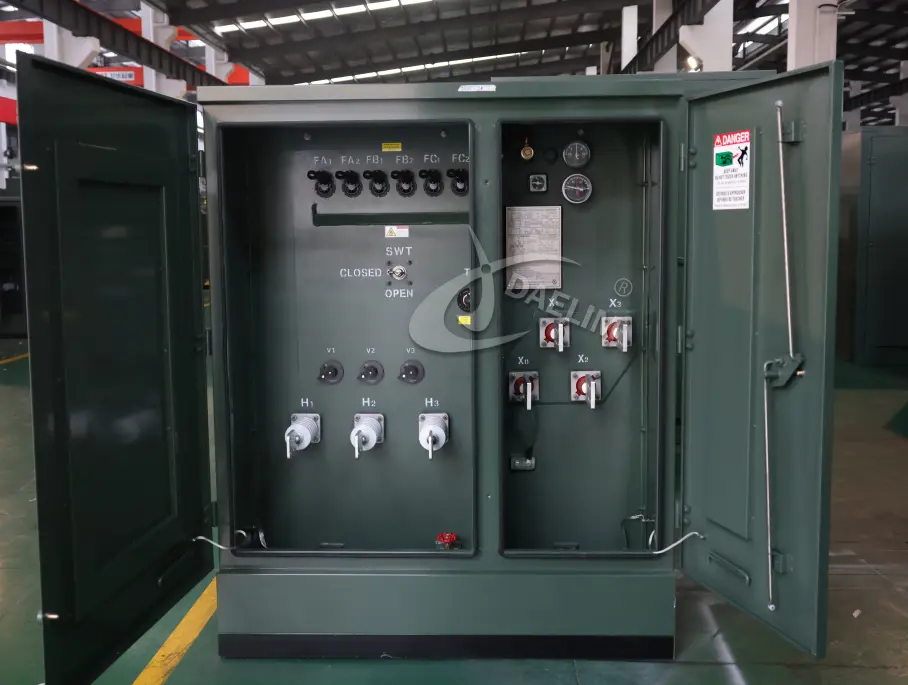
Lightning arresters are designed as a safeguard from the high-energy surges caused by direct or nearby lightning strikes. It acts as a bypass, where the leakage current from the lightning strike is channeled into the ground.
As far as Surge Protectors, they do protect equipment from low-to-medium voltage surges that can be caused by switching operations, fluctuation in load, or certain faults within the system.
Voltage Handling Capability
High voltage, like tens of thousands of kilovolts, can be withstood by lightning surge arresters.
On the other side, surge protection devices are built to protect from low-voltage surges, usually ranging from 120V to 600V.
Installation Site
Lightning arresters are installed on the entry point of the system- the high-voltage side of a transformer or substation- into which surges are prevented from entering the network.
Surge protectors are located downstream near the equipment they protect, such as control panels or data centers..
Response to Surges
Lightning arresters' response time is extremely fast for high-magnitude impacts.
Surge protectors respond to these very frequent but low-energy transients, as the protection is continuous for low-voltage circuits.
Design and Components
A lightning arrester usually consists of a metal-oxide varistor or spark gap type, designed to ground even a high-energy lightning strike.
A surge protector consists of component types such as MOVs or gas discharge tubes, which clamp and absorb overvoltages.
Application in Transformers
Arresters are important when it comes to protecting transformer bushings and windings from lightning damage.
Surge protectors may also find uses within transformer control cabinets, relay panels, or systems associated with SCADA to protect low-voltage electronics.
You may enjoy: Transformer Protection Devices
Why Both Are Important for Transformers
In substation transformer, there can be a crucial gap in their protection if it entirely relies on one protection form, such as lightning or surge arrester. These two serve different purposes against various voltage incidents. To ensure complete coverage, the use of both a surge protection device and a lightning surge arrestor is thus needed.
Protection from Outside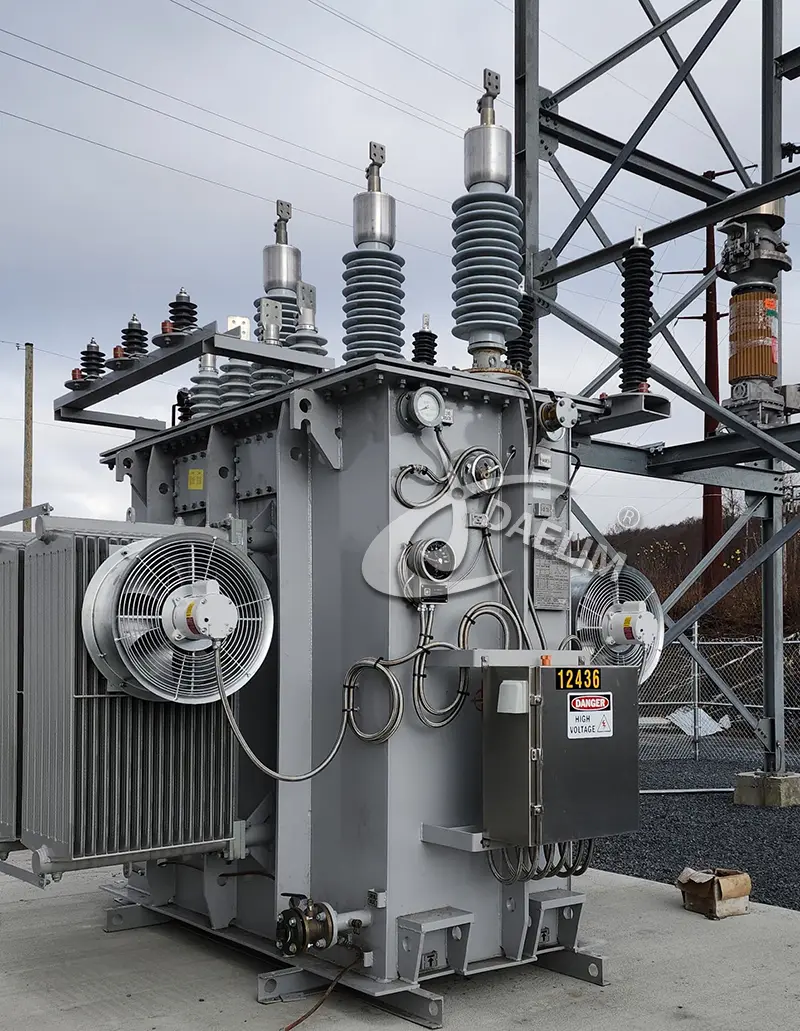
Transformers are mainly outdoor or substation installations; exposure to direct lightning strikes or lightning surge-induced voltages can make transformers susceptible. A lightning arrester is meant to absorb or divert very high voltage transients from entering the coil windings of a transformer.
Without a properly rated arrester, one lightning event can create insulation failure or even loss of an entire transformer.
Shields from Internal Surges
The system can produce surges even without lightning, mostly due to the switching operations, energization of capacitors, or fault-clearing events. The sensitive control systems, relays, or smart monitoring equipment connected to the transformer may degrade due to such surges. This is where surge protectors play a key role. With panel-mounted surge protection devices and power surge strips, it clamps lower-energy overvoltages and prevents cumulative damage.
Layered Protection Strategy
When transformers use both types of protection, a layered defense mechanism gets activated:
Lightning surge arrestors counter high-energy impulses at the entry for lightning surges.
Surge protection devices take care of residual surges that get away from the arrestor or originate within the system.
This double-protection concept is not just a good design, but often requires action to obtain dependable operation of transformers.
Long-Term Equipment Reliability
If one type of protection is ignored or neglected, the other might either cause slow but serious deterioration or might end up with instantaneous failure. The two devices used together will enable the transformer owner to lengthen service life, avoid maintenance, and mitigate costs from unplanned downtime.
Reading more about Transformer Protection
Conclusion
A lightning arrestor is intended to handle the high-voltage transient surges due to direct lightning strikes to protect transformers at the grid entry point. On the other hand, a surge protector, which is a panel-mounted or surge strip, is meant for internal or utility-generated lower voltage transient surge voltages.
Both combined guarantee an effective layered and dependable protection strategy against a wide range of electrical threats. Leaving any of it out would expose equipment to wear, service interruptions, or grave failure.
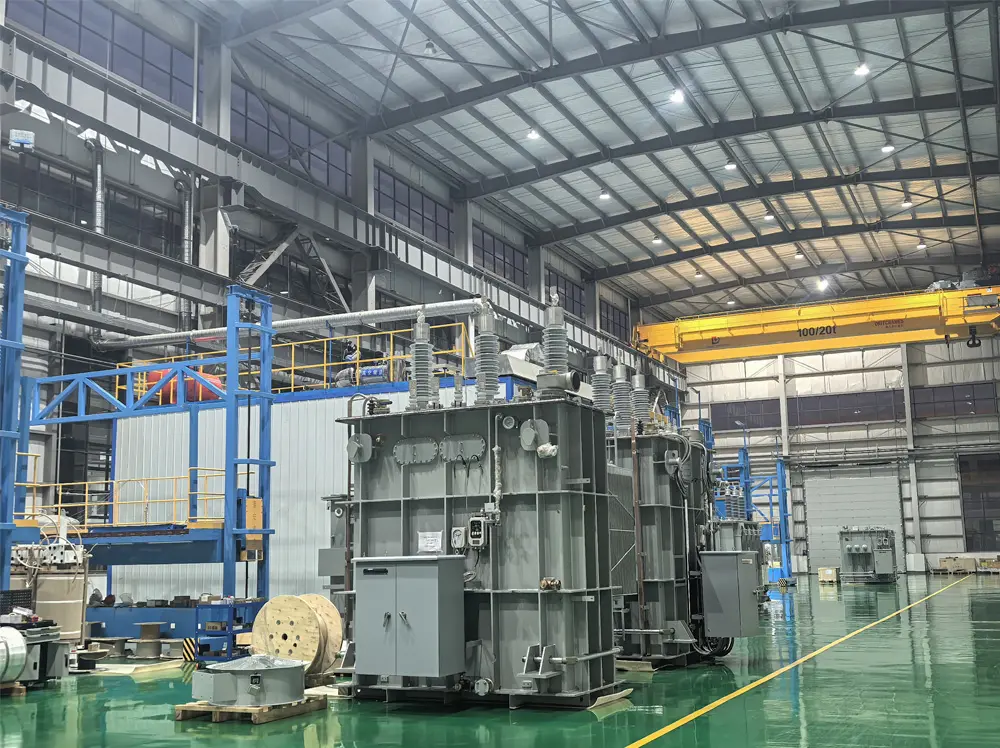
At Daelim Transformer, we are aware of the importance of lightning arresters and protection against surges. Our transformer solution incorporates built-in surge protection systems compliance with international standards, to assure long-term operational reliability.
Contact us today to see how Daelim Transformers helps build your power infrastructure to be safe and efficient.
Related Products
Related Article
Comparing Amorphous Core and Silicon Steel Core Transformers
Amorphous and silicon steel cores are key transformer materials. Amorphous cores offer lower core losses, higher efficiency, and are ideal for energy-efficient, eco-friendly applications, but are costly and fragile. Silicon steel cores are cheaper, durable, and suitable for high-power, mass applications, though with higher losses. Choice depends on efficiency needs versus cost considerations.
Guide to Common Industrial Transformer Voltages
Selecting the right industrial transformer voltage is crucial for equipment efficiency, safety, and energy loss reduction. Voltage must match machinery needs, regulatory standards, and allow for future expansion. Transformers are categorized into low, medium, and high voltage types based on application requirements in manufacturing, services, data centers, and power distribution systems.
Transformer Design & System Grounding (Wye vs Grounded Wye)
This article explains the importance of selecting the right transformer design and grounding method—focusing on grounded wye vs. ungrounded wye configurations. It highlights how proper grounding ensures safety, reliability, and efficiency in power distribution systems, providing an overview and comparison for engineers and technicians working with electrical transformers.
Transformer PCBs: Understanding Their Role, Risks, and Modern Alternatives
This article explores transformer PCBs (Polychlorinated Biphenyls), once widely used for their superior chemical properties. It explains their benefits, toxicity, and the environmental concerns that led to strict regulations and a shift toward safer, sustainable alternatives in the transformer industry. Readers will understand why PCB transformer oil is now largely phased out.
Voltage Regulation of Transformer
This article explains transformer voltage regulation, which ensures stable electricity delivery by minimizing voltage fluctuations. Proper regulation improves power quality, reduces energy losses, protects sensitive devices, and enhances the reliability and efficiency of the electricity distribution and consumption system.
Zig Zag Grounding Transformer
Transformer grounding is vital for safety and reliability in power distribution. It ensures stable voltage, prevents equipment failure, and safely directs fault currents. Various grounding methods exist, including solid and resistor grounding. Among them, the zig-zag grounding transformer stands out as an efficient and reliable solution for diverse electrical applications.

